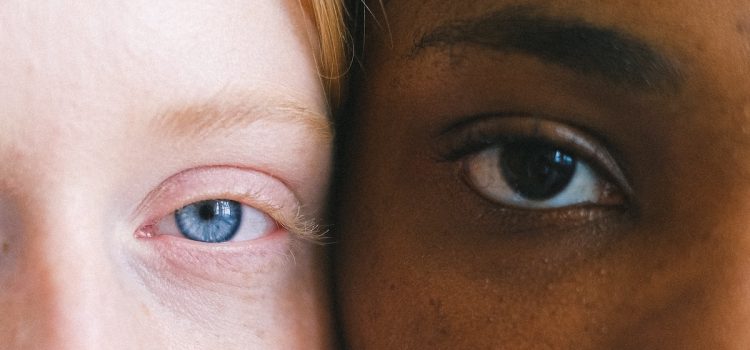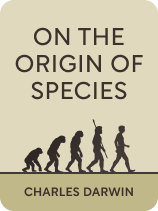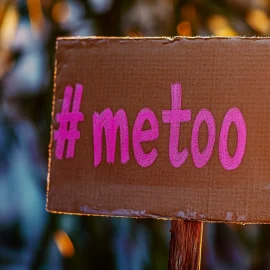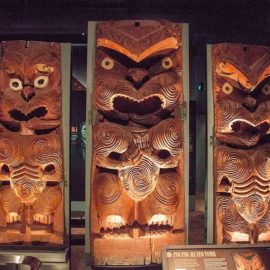

This article is an excerpt from the Shortform book guide to "On the Origin of Species" by Charles Darwin. Shortform has the world's best summaries and analyses of books you should be reading.
Like this article? Sign up for a free trial here.
How much did Charles Darwin understand genetics? Where did the term “survival of the fittest” come from?
A foundational work in the field of biology, On the Origin of Species revolutionized the way we look at life on Earth. Published in 1859 by the naturalist Charles Darwin, this work explains and argues for his theory of evolution.
Keep reading to learn about the four mechanisms of evolution that Darwin believes are at work.
The Four Mechanisms of Evolution
Darwin explains evolution as a process. This process entails four mechanisms of evolution: variation within a species, the heritability of variations, natural selection, and gradual accumulation.
1) Variation Within Species
Organisms in every species vary slightly. Darwin observes that, when examined closely, no two creatures are identical. Their body parts all have slightly different shapes, sizes, textures, and colors. Even vital organs like hearts, kidneys, and spinal cords vary slightly in size and shape from creature to creature. Among humans, for example, you’ll find minor differences in height, bone structure, fingernail density, tongue flexibility, thumb shape, and so on.
| The Origin of Variations: DNA Mutations While Darwin recognized that species exhibit variations, the biologists of his time couldn’t explain the origin of these variations or how new variations arose. These knowledge gaps have since been filled by the discovery of DNA and its mutations. Deoxyribonucleic acid (DNA) was first discovered in 1869 by Friedrich Miescher, but its purpose wasn’t clear until the mid-twentieth century. Now we know that DNA provides a set of instructions for growing an organism: what proteins to produce and how to assemble them. However, these instructions can change every now and then through a process called mutation that creates minor variations in the sequence. Mutations are caused by errors in replicating and repairing DNA sequences or by exposure to mutagens—substances with the power to damage or alter DNA—such as radiation or ultraviolet light. |
2) Heritability of Variations
Furthermore, Darwin explains that these variations are heritable: They can pass from parent to child through reproduction. For example, if your parents have red hair, you’re more likely to have red hair as well. This means that the variations in a given species were likely passed down from parents who also had these variations.
| Heritability and the Discovery of Genetics While Darwin understood that heritable traits could be passed on from parents to their offspring, he didn’t yet understand how. This is because the field of genetics was just beginning. Geneticists attribute the foundation of their field to Gregor Mendel (1822-1884), a biologist and monk who discovered laws of heritability by breeding pea plants. As Siddhartha Mukherjee writes in The Gene, Mendel’s key insight lay in discovering that heritable traits could be passed complete and intact from parent to offspring. For example, a parent with green eyes and a parent with brown eyes could have a child with brown eyes instead of mixed greenish-brown eyes. This overturned previous theories that traits would blend together during inheritance. Mendel argued that there must be a unit of inheritance, which scientists would later call a gene. He published the results of his experiments in 1866, six years after the original publication of On The Origin of Species. It seems that, while Mendel was acutely aware of Darwin’s work, Darwin was unaware of Mendel’s. |
3) Natural Selection
However, not all variations stand an equal chance of being passed along to the next generation. Darwin asserts that any heritable variation that provides one member of a species with an advantage in survival and reproduction over another, no matter how slight, will gradually allow members with that variation to survive and reproduce more than those without it. Over successive generations, natural selection will favor the most useful variations while eliminating the least useful.
(Shortform note: While Charles Darwin didn’t come up with the phrase “survival of the fittest,” he adopted it after other writers used it to describe his findings. Biologists have since tested how much of a difference in “fitness” between organisms of the same species is needed to trigger natural selection. Researchers made tiny detrimental adjustments to the genes in the microorganism salmonella. They found that reducing the bacterium’s fitness by just 0.01% was enough to create noticeable differences in rates of reproduction, suggesting that evolution will select for even the slightest variations over time.)
Darwin explains that natural selection happens constantly because many organisms in nature aren’t able to reproduce and survive. Problems such as scarcity of food, competition between species, predators, and disease all limit the number of organisms in a species that will successfully pass on their heritable variations. This pressure ensures that variations that enable survival and reproduction are strongly selected for, while those that don’t confer an advantage are selected against.
| The Influence of Malthusian Economics on Darwin’s Theory In his analysis of scarce resources and population pressure in nature, Darwin was heavily influenced by the controversial 18th-century economist Thomas Malthus. Malthus argued that human populations would grow faster than food production, leading to inevitable famines unless population growth could be controlled. This influenced Darwin’s view of the evolutionary pressures imposed on populations by scarce resources. Today, Malthus’s theories have been heavily discredited. He failed to anticipate how technological advancements in agriculture would support larger populations. His theories have also been associated with controversial and immoral social policies. Malthus argued vehemently against welfare for the poor, as this would encourage them to reproduce, and he played an instrumental role in overturning Britain’s “Poor Laws.” His theories were also used to justify government inaction in the face of the Irish potato famine and the disastrous famines in British colonial India, as some argued that these disasters were simply the result of overpopulation instead of economic mismanagement or agricultural failure. However, his influence on Darwin led the naturalist to an important insight: Many organisms never survive long enough to reproduce—in fact, many organisms produce far more offspring than will survive as a reproductive strategy—and therefore any small advantage would be naturally selected for in the face of enormous pressure to survive. |
4) Gradual Accumulation
Finally, Darwin argues that this slow accumulation of useful variations changes a species over time. As some traits are selected for and others selected against, the species gradually shifts as more of the population inherits the most useful traits.
For example, a deer with slightly longer legs than other members of its species can run faster than the others, allowing it to escape more easily from predators. Not only is this deer more likely to survive long enough to reproduce, but its offspring are also more likely to survive long enough to reproduce because they’ll inherit this useful trait. This means that after many successive generations, more deer will inherit the trait of longer legs than the trait of shorter legs. Eventually, you’ll have an entire population of faster, lankier deer.
| Evolution in Action: Superbugs While evolution takes a long time for larger organisms like deer, we’re able to observe this process happening during our lifetimes in microorganisms, which reproduce much faster and have shorter lifespans. In fact, this process creates a significant challenge to modern medicine, as infectious microorganisms evolve the ability to resist our antibiotics. This process has even given rise to new “superbugs” that have evolved an immunity to conventional antibiotics. The rise of superbugs reveals Darwin’s theory in action. The presence of antibiotics kills off the microorganisms that can’t resist them, leaving only the microorganisms that can. As soon as a microorganism develops a mutation that enables it to resist the antibiotic, this organism will easily out-reproduce those without the mutation. Soon you have an entire population of antibiotic-resistant microorganisms. |

———End of Preview———
Like what you just read? Read the rest of the world's best book summary and analysis of Charles Darwin's "On the Origin of Species" at Shortform.
Here's what you'll find in our full On the Origin of Species summary:
- Charles Darwin's theory of evolution that changed how we look at life on Earth
- The objections raised against Darwin's theory and Darwin's rebuttals
- Updates on Darwin's theories from contemporary biology





